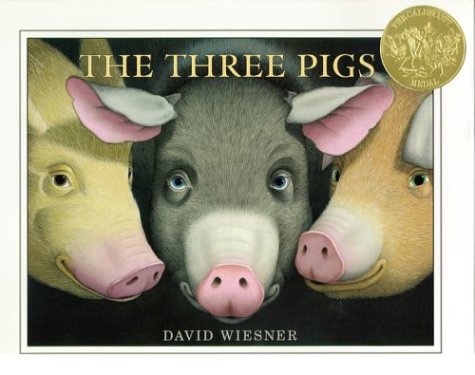

Title: Tuesday
Written by: David Wiesner
Summary: This is a basically wordless book that shows a crazy Tuesday night. On this particular Tuesday night mysterious frogs on Lilly pads are floating around the neighbor hood, through laundry, and messing with peoples living rooms. When the town awakes in the morning all that’s left behind are the hundreds of lilly pads, which no one can explain. The story ends with next Tuesday promising to be just as interesting.
I really enjoyed looking through this book. David Wiesner has such a creative way of portraying his stories without actually giving us words to read. However, we do not need the words to read because his story is right there on the page. I love how he sets up some of his pages with a main picture in the background and then almost scene like slices of other things that are going on. The first page sucks us right in with an almost eerie feeling as we see a turtle minding his business on a log. I love how Weisner brings us closer and closer to the turtle as we realize that the turtle looks pretty worried. The main characters in the story would probably be the frogs, but I think this story is being told from the on lookers perspective. The reader does not know why the frogs are there, or what they are doing, or even when they will leave. Weisner only gives us a couple of times throughout the story showing the progression of time. I think this is a very important literary element that Weisner wants us to notice. Its important to the story that we see how long these frogs are floating around outside. We see that all throughout the night the frogs are playing and causing mischief. We see that when the ligh starts to come up, again showing the passing of time, all of the frogs must hop down off their lilly pads, and return back to their normal lives. We are then shown that next Tuesday right around 8 o’clock again, it looks like pigs get to go for the ride. This book is a great way to model both how much pictures can show us, and how important the passing of time can be to a plot line. I would use this story in my classroom to introduce the point of view of the reader as well.





